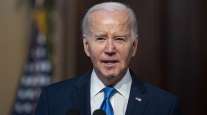EOBR, HOS Plans Garner Some Support, But Also Draw Criticism, Spark Lawsuit
This story appears in the Dec. 19 & 26 print edition of Transport Topics.
The federal government’s regulatory agenda held trucking’s attention throughout 2011, with proposals including a requirement for electronic onboard recorders on all trucks — and a plan to revise hours-of-service rules for truck drivers.
The Federal Motor Carrier Safety Administration proposed in January to mandate EOBRs for every interstate motor carrier to monitor compliance with hours-of-service rules. It expands a previous rule that initially would have required the devices for carriers with the worst HOS violations — with universal use of them to commence at a later date.
“This proposal is an important step in our efforts to raise the safety bar for commercial carriers and drivers,” FMCSA Administrator Anne Ferro said.
But a final rule planned for June 2012 was put in jeopardy in August, when a federal appeals court overturned the first mandate for EOBRs for significantly out-of-compliance carriers. The agency failed to adequately consider the possibility that carriers would use the devices to harass drivers, the court said.
The proposal had earned approval from groups including American Trucking Associations and the Truckload Carriers Association.
Detractors included the Owner-Operator Independent Drivers Association, which had filed the harassment lawsuit.
Ferro announced in November that FMCSA would drop the mandate aimed at the worst offenders and would focus instead on its universal mandate.
The agency also helped truckers with a transition to its Compliance, Safety, Accountability program, which revolutionized how the government tracks fleets’ safety (see story, p. 10).
Meanwhile, the U.S. Environmental Protection Agency and National Highway Traffic Safety Administration issued their greenhouse gas emissions and fuel economy standards for heavy- and medium-duty trucks in August.
The first-of-their-kind fuel standards promised to improve emissions and fuel economy by 20% when they’re fully implemented in 2018. The rules start to take effect for new trucks in 2014 and ramp up from there.
“This is a good day when we get a federal rulemaking that we think has a positive [return on investment] on a horizon that we can actually see,” ATA President Bill Graves told Transport Topics when the rules were announced.
ATA worked closely with federal regulators on crafting the rules, which earned support from carriers, engine makers and truck manufacturers, as well.
FMCSA’s regulatory actions also included a rule that will prohibit all handheld use of phones by commercial drivers.
The agency also agreed in November to do a two-year study on the effects that trucker detention at shippers’ docks has on safety.
The Pipeline and Hazardous Materials Safety Administration looked into a rule that would prohibit tank trucks from carrying fuel in unprotected tank lines.
Trucking blasted the so-called wetlines rule as costly and unnecessary after PHMSA proposed the rule in January. The National Tank Truck Carriers group repeatedly urged the agency to drop the proposal.



